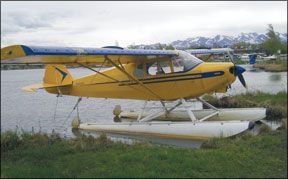According to seaplane instructors, the most commonly uttered phrase by a landplane pilot following the first seaplane lesson is: “My Gawd, this is fun. Why didnt I do it sooner?” The second is often, “I want one of these things.”
With the hook firmly set, lets look at what the truly smitten goes through in determining how much fun he or she can afford and what kind of seaplane to buy.
We strongly suggest that the first step in such a process is to join the Seaplane Pilots Association. Its an excellent organization for those who want to have anything to do with seaplanes. Its forums contain a wealth of information on specifics of seaplane ownership and operation.
What constitutes a fun seaplane? We consider fun seaplanes as ones where the idea is to fly purely for pleasure; in which the owner wants to knock around the sky and explore the waterways that are suitable and legal for seaplanes to alight; to take at least one passenger and enough stuff for a picnic or to go fishing or maybe stay overnight at a remote cabin or campsite on the shore. Fun seaplanes are for
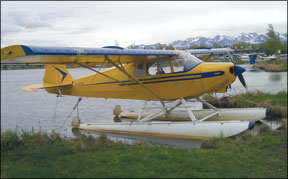
the aeronautical version of the sailors “gunkholing.”
The airplane is not going to work for a living, need to haul a lot of stuff, travel great distances or handle particularly rough water or weather. We opine that fun seaplanes have but one engine that develops less than 200 HP, but we recognize that such a cutoff is arbitrary. The 145-HP Aeronca Sedan and 150- to 180-HP Piper Super Cubs and 180-HP Huskies are often serious, working seaplanes hauling cargo and people on a day-to-day basis.
More Options on Floats
A seaplane has come to be a generic name for any kind of airplane that can land on the water and then take off. It includes floatplanes, which are airplanes that are supported above the water by a float or floats, and flying boats, where the fuselage of the airplane functions as a boat hull with sponsons, usually on the wings, keep it from tipping over when in the water. Flying boats are usually amphibious, being able to alight on land or water. Floatplanes may or may not be amphibious.
With the exception of the Colonial Skimmer (which begat the Lake Amphibian series and are quite rare), all of our fun birds are floatplanes.
Floatplanes nearly always use two floats separated by spreader bars and attached to the fuselage by struts. The airplane has to have either been built or modified to accept floats, which means attach points at or near the landing gear attach points and any needed beefup of the airframe to handle the pounding transferred to it as the float structure does not include shock absorbers. The floats also have rigging that allows them to be aligned appropriately in all three dimensions. Float and airplane combinations must be certified by the FAA, usually through the Supplemental Type Certification process. Floats are destabilizing in yaw and may require some vertical stabilizer modification.
The first decision a prospective buyer must make is not what airplane, but which type of floats. That inquiry is generally determined by the sort of water access that is available. Can the seaplane be based along a shoreline where fuel is available, and it can be docked or beached to be worked on? Is it possible to get a mechanic to the floatplane for those times when something breaks? If so, then an airplane on straight (non-amphibious) floats are an option. Straight floats mean more useful load and lower operating costs by avoiding landing gear.
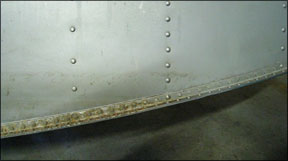
We recommend that an owner of an airplane on straight floats find a way to get it out of the water when it is not being flown, as there is not a set of floats in the world that is completely watertight. Picture getting to the dock and seeing only the top of the wings, fuselage This becomes even more important if the airplane is to be based or flown in salt water as a fresh water hose-down following each days flying is essential to delay the onset of corrosion. Keeping a fabric-covered airplane outdoors in a region that has a risk of hail and the other accouterments of thunderstorms is also a concern.
If shore access is not available or convenient, it means amphibious floats and enough airplane to haul them. The downside is a loss of useful load and steering using differential braking while taxiing (think of steering a grocery cart where the front wheels swivel and the rear wheels are fixed). The positives are many more places to land and an airplane that sits so high that the wings will usually be above all the other airplane wings on the ramp. The tail may be too high to get into your hangar, but a dolly that lifts the front of the floats and depresses the tail may solve the problem.
We recommend that a first-time floatplane buyer purchase an airplane that is already on floats. Its generally less expensive to buy the married couple than the airplane and floats separately, especially when the cost of installation is considered. Installing straight floats on an airframe for the first time takes from one to three days (amphibs take a little longer). After that, the floats and wheels can usually be swapped in half a day.
Choosing Your Machine
So, what sort of airplane will maximize the fun/cost quotient? Because of sheer numbers, we limited our search to production airplanes, being fully aware that there are lot of excellent homebuilt floatplanes and flying boats out there.
Starting at the top power and cost end of the spectrum, the Aviat Husky is in production, and the 180-HP model may be purchased new on just about any set of
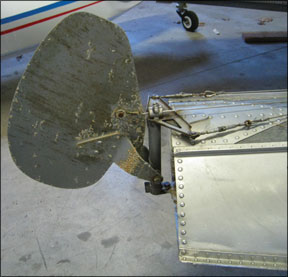
floats desired for something north of $230,000. A new, four-place, 180-HP Maule MX-7 on your choice of new floats will set you back just under $200,000. For roughly half of that sum or less, one can find a late-model used, float-equipped, Husky, Super Cub, Maule MX-7 or American Champion Scout. The Husky and the later Super Cubs (with standard 150 HP engines or modified with 180 HP) are considered the gold standard of two-place floatplanes. We like them a great deal. Handling and performance differences are subtle, yet enough to ignite arguments among aficionados of each. Both will go in and out of remarkably small bodies of water, especially when equipped with VGs. (However the accident data for hitting obstructions shows some of these pilots are attempting lakes that are just a little too small.) The 180-HP Maule series does not have the performance of its more powerful brethren, yet it ranks right at the top of the four-seat, under 200-HP seaplanes for overall ability.
A number of seaplane owners get their enjoyment from participating in formal or informal competitions to see which airplane will come off the water in either the shortest distance or time (a faster airplane may take less time than a slower airplane but cover more distance). To win such competitions means serious application of money in the form of larger engines, VGs, STOL kits, the right floats and other modifications. The Super Cub and Husky line start out competitive without modification and do extremely we’ll when modified.
Right behind the Super Cub and Husky come the American Champion Scout at 180 HP and the float-equipped Citabria. We think highly of the Scout and its abilities. While the Scout and Citabria do not have the low-speed wing of the Super Cub and Husky, they are still extremely capable floatplanes. They are usually much less expensive to purchase than Super Cubs of the same vintage. If a buyer doesnt mind not having a clamshell door, they are among the best value airplanes for the dollar on the market.
For those who want the delight of float flying for a little less money and do not have a burning desire to set the worlds record for short takeoffs, there is a remarkable selection of airplanes. From the Piper line, we like the PA-12 Super Cruiser. It began life with 100 HP, but 125 and 150 HP mods are common, especially on floats. It has a wider fuselage than the Super Cub, with a rear seat that has room for two svelte adults. Prices, on floats, are dependant on the condition of the
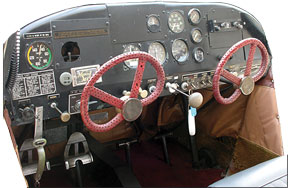
airplane and the floats, as we’ll as how many of the myriad of mods have been installed.
The Piper J-3 Cub makes a good float plane, especially with a 90 or 100 HP engine. As with any of the lower powered float planes, it requires that the pilot watch loading and space available for takeoff, as it takes a lot more room to get into the air and over an obstacle than it does for the arrival. With Cub prices we’ll inflated, it may take $50,000 or so to acquire one on floats.
The Aeronca Champ and Chief have been making owners happy ever since the first ones were put on floats in the 1940s. While we would not particularly care to make a takeoff in an original 65-HP version, the larger engine mods make them most satisfactory. When it comes to the challenges of docking a seaplane, we like the Chief, which has a door on each side. Good ones, on straight floats, can be found for under $40,000.
The much rarer, four-place, Aeronca Sedan has an especially good reputation on floats and has served in the bush for decades. With the original 145-HP or larger engines, pilots swear by them. A good example, on floats, can be purchased for under $50,000. As not many were built, there are few on the market at any given time, but they are worth considering by anyone who might otherwise be looking for a two-place floatplane.
We suggest that a prospective buyer of a seaplane and/or set of floats that has worked for its avgas should be especially cautious in making a prepurchase inspection to see if the airplane or floats were regularly worked hard and put away wet.
Cessna singles have been put on floats since not long after the first ones were built in 1927. The 120, 140, 150, 170, 172 and 175 series all are approved for floats and fit into the category of an enjoyable, knockaround seaplane. The original 85 HP
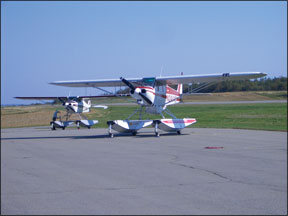
engines (some 90 HP) in the 120s and 140s do allow adequate performance on straight floats, although 100 HP mods are popular.
For some reason the Cessna 150 on floats is sort of the Rodney Dangerfield of seaplanes and gets no respect, however, at 100 HP and only marginally heavier than a 140 and with a larger, more comfortable cabin, its not bad. The 150 HP conversion, especially with VGs or a STOL kit makes it a capable performer. The 170, 172 and 175 series have engines ranging from 145 to 195 HP (more with aftermarket mods) with performance and cost proportional to horsepower. Treat them as no more than three-place airplanes, and with float-equipped prices ranging from under $40,000 to $90,000 for an R172K in good shape, they will provide the ability to explore remote lakes as we’ll as take a couple of friends on a fishing trip to the backwoods.
Various versions of the side-by-side seating Taylorcraft have proven popular on straight floats, the high aspect ratio wing giving good takeoff performance compared to other airplanes with similar power. Users report that the 100-HP conversions perform quite well, often surprising competitors in short takeoff competitions.
While not seen frequently on floats, Luscombes, especially with larger engines, do just fine.
Adding Floats to a Plane
Should you do decide to buy floats for your airplane there is a surprisingly large selection with composites coming into their own to compete with aluminum. While not all manufacturers build floats for all airplanes, as some concentrate on the heavier or lighter end of the single-engine spectrum, the chances are good that if your airplane has one type of float approved for it, it has more than one.
Considerations are price and weight of the float installation. Visit the Seaplane Pilots Association web forums to get user feedback and suggestions as to brand and size of float for a particular airplane. Seaplane operators also tend to have experience with various floats on different types of airplane and may have recommendations.
New floats are just plain expensive. In many cases, the installed cost equals the value of the aircraft. Dont be surprised to see prices that start at over $20,000 and quickly get into the $50,000 range. They are flight tested and certified just like an airplane. However, a new set of floats may we’ll outlast the airplane for which they are purchased. With a little care, seaplane floats will last decades. A lot of the float manufacturers also recondition and sell used floats, often as low as half the price of a new set.
The big names in float manufacturer are Aerocet of Priest River, Idaho (www.aerocet.com); Wipaire, in South St. Paul, Minnesota (www.wipair.com); Baumann Floats in New Richmond, Wi., (www.baumannfloats.com); and P K Floats
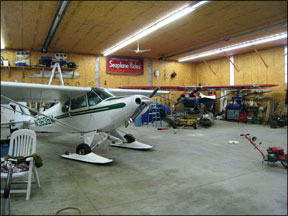
of Lincoln, Maine (www.pkfloats.com). Edo, one of the very first manufacturers of floats, is no longer making them, however, it seems that there is an Edo float approved for just about any airplane built up through the DC-3, and they are available used and reconditioned through Kenmore Air Harbor.
The Dark Side of Fun
A caution for fun floatplanes-particularly the Cubs, Huskies, Champs and Chiefs with tail surfaces that have no camber-is that they are subject to abrupt pitch down and roll off when stalled while uncoordinated (the ball not centered). While recovery is conventional, there is still 300 feet or more of altitude loss, even when recovery is started immediately.
Because flying at low altitude and maneuvering is a common way of spending time in small floatplanes, an uncoordinated stall is often fatal. This terminal maneuver has acquired the name “moose stall” from its frequency in Alaska among those who are down low, looking for wildlife.
The presence of fuel tanks in the fuselage (some right in front of the front seat occupant) in such aircraft as the Cub, Chief, Champ and Luscombe, makes them subject to a higher rate of post-impact fires. All of the airplanes in the fun floatplane category have an accident rate that we’ll exceeds that of general aviation as a whole.
If the fun-meter has not given up the ghost by this time in the analysis, insurance has to be discussed. Its available for fun floatplanes, but its not cheap. For a low-time private pilot who is new to floats, $1 million liability with $100,000 per person sublimits ($1 million coverage with no sublimits is simply not available) will run $1500 to $2000 annually. Hull insurance may or may not be available. Prices drop some as the pilot gains experience.
Finally, once our fun-determined pilot has run the nay-sayer gauntlet of “you cant possibly do that” and finds an airplane of interest, we are adamant in insisting that unless he or she has a financial death wish, it is imperative that it undergo a thorough pre-buy inspection by someone who knows not only seaplanes, but that particular model airplane. In addition to all the usual caveats about checking special items for the type of airplane, make an aggressive check for corrosion and a close inspection of the floats for the effects of getting the living bejabbers beat out of them on rough water or damage from pilot misadventures. Despite their certification, there is no separate logbook kept for floats.
There are cynics who claim that seaplane ownership provides the maintenance expense of an airplane plus two boats that get run at high speed. We suspect those cynics have never flown a seaplane because even if that statement were true, its so much fun, it just might be worth it.
Rick Durden eschews wheels for skis or floats whenever he can.

